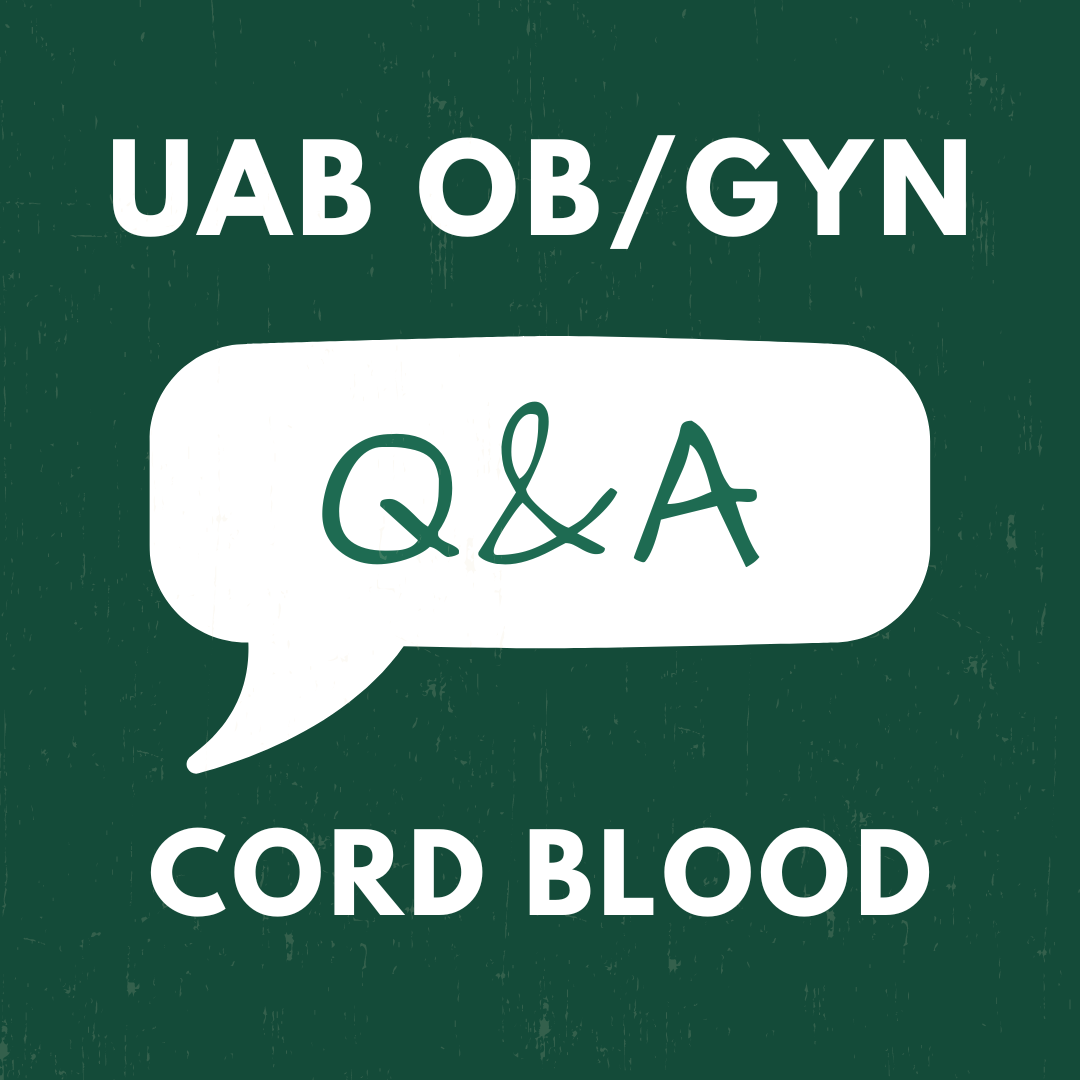 July is Cord Blood Awareness Month, and we asked Brian M. Casey, M.D., professor and division director for the UAB Division of Maternal-Fetal Medicine, some questions about umbilical cord blood, cord blood banking, how the UAB Department of OB/GYN is making a difference, and more.
July is Cord Blood Awareness Month, and we asked Brian M. Casey, M.D., professor and division director for the UAB Division of Maternal-Fetal Medicine, some questions about umbilical cord blood, cord blood banking, how the UAB Department of OB/GYN is making a difference, and more.
Casey also serves as vice chair of Obstetrics for the UAB Department of Obstetrics & Gynecology (OB/GYN).
What is cord blood?
Umbilical cord blood is the blood that remains in the umbilical cord and placenta after the umbilical cord is clamped and cut. It is typically discarded as medical waste.
What can it be used for?
Umbilical cord blood is a rich source of stem cells which can be used to treat multiple cancers, blood diseases, immune disorders, and more. Cord blood stem cell transplants may even be better than bone marrow transplants for some of these diseases.
What is cord blood banking?
Umbilical cord blood banking is the process of collecting the typically discarded cord blood, from the cord and placenta, at the time of birth. Once the baby is handed off to the pediatrician, the process of harvesting valuable stem cells that can be stored or “banked” for later use, begins.
What is the UAB Department of OB/GYN doing to help promote cord blood donations and banking?
UAB has joined forces with LifeSouth to offer cord blood collection to women who deliver at our hospital. Patients who consent will have their cord blood collected by delivering providers after the baby is safely handed off to the pediatrician. It is then processed by staff from the Center for Women’s Reproductive Health (CWRH) and sent to LifeSouth for evaluation and banking of harvested stem cells. If the specimen is adequate for banking, LifeSouth contacts the donor mother and takes a more detailed history, which is important for establishing appropriate recipients in the future.
This is a truly collaborative initiative involving nurses, physicians, research staff, LifeSouth, and, most importantly, our great pregnant patients. LifeSouth has been a tremendous partner in this new endeavor at UAB, and we are grateful to be part of a program that could potentially save lives for many others across the globe.
Why is it important to bring awareness to cord blood and its benefits?
With its development only over the last 40 years, umbilical cord blood banking is a relatively young technology. The recognition of umbilical cord blood as a rich resource of valuable stem cells for treatment of various diseases and conditions continues to evolve, and demand is growing. There have been more than 40,000 cord blood transplants worldwide. Therefore, it is important to heighten awareness of the value of this resource and encourage donation, especially when considering that it is typically discarded as medical waste after delivery.
Is there continuing research being done around cord blood?
Potential uses for cord blood stem cells continue to be identified through research. The UAB Department of OB/GYN is active in multiple research projects involving umbilical cord blood stem cells through collaborations with other investigators on campus.
For more information on LifeSouth's Cord Blood Bank or donating, click here.